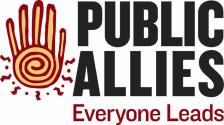As my coworker Martha and I got on the bus together one morning, a tiny old woman in a big overcoat sitting at the front of the bus waved at Martha. She waved back, smiling wide. The woman said something I didn’t catch in Spanish and Martha nodded vigorously, saying, “Yea, yea, yea!”
“I don’t remember who she is,” she muttered to me a few moments later, and I laughed. As we exited, another person waved and then a tall man in a puffy blue jacket stopped to talk to us on the sidewalk. Martha hugged him and asked about his mother, the Laundromat she runs, and the hair salon that he runs. We got stopped on the street two more times this way on our way back to the office.
Martha knows everyone, or knew everyone at some time, or treats everyone like she knows them. After 17 years as a housing counselor at St. Nicks Alliance, it is no wonder that she knows so many people in the neighborhood, and that she can’t keep track of them all.
What’s more, she adores strangers. When we call to order pizza for a meeting, she banters with the pizza man as if they’re old friends, then admits she has never met him. She flirts with the cab driver and gives her dinner to him, pollo y arroz con gandules, wrapped up in styrofoam. She spends an extra minute at the bodega counter as we buy ice, checking on how the worker’s week has been.
One evening in October she told me something simple that still sticks with me. Walking out of the office together, Martha waved at three men who always hang out on a certain stoop on Powers Street, cursing and smoking. They all waved back, calling “Marta!” fondly. As we got out of earshot, she told me:
“Kelly– always be friendly to everyone in your neighborhood, even if you don’t know them. You never know when it will save you.”
She told me about a time that she was visiting the tenants in a building across the street from the bodega where we buy ice. As she left, the landlord confronted her on the stoop, yelling at her about talking to the tenants about their rights:
“He was two inches from my face,” Martha said, “and raising up his hand as if to strike me, and the man at the deli saw and came out to the sidewalk, and yelled, ‘HEY! What’s going on!?’ And the landlord went inside real quick, you can bet.” She laughed.
“People usually won’t go that much out of their way for strangers– they won’t get involved. But if they know you, it’s different.”
I laughed with her, so proud to be walking beside her in a world of people that seem to love and need her so.









